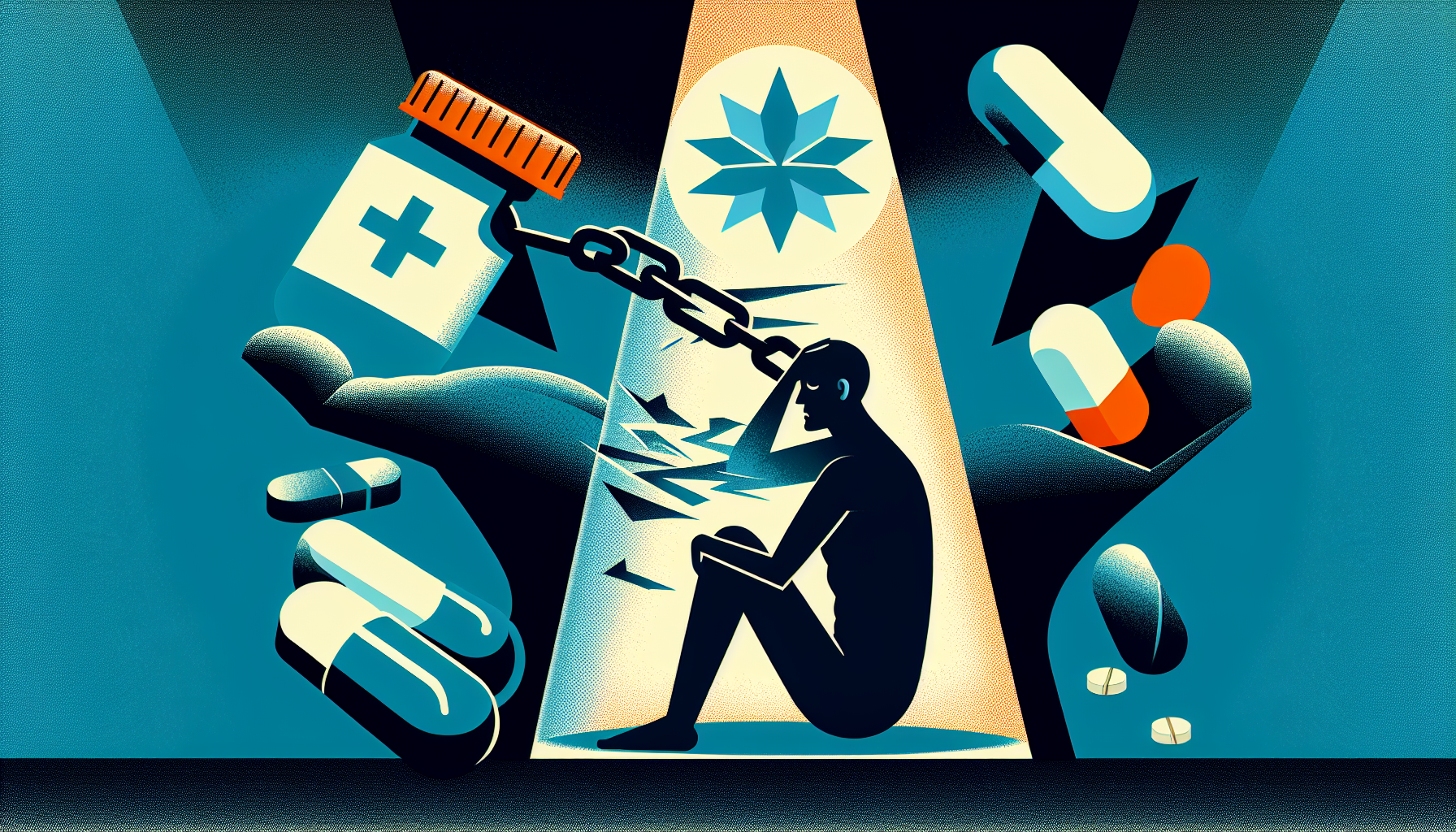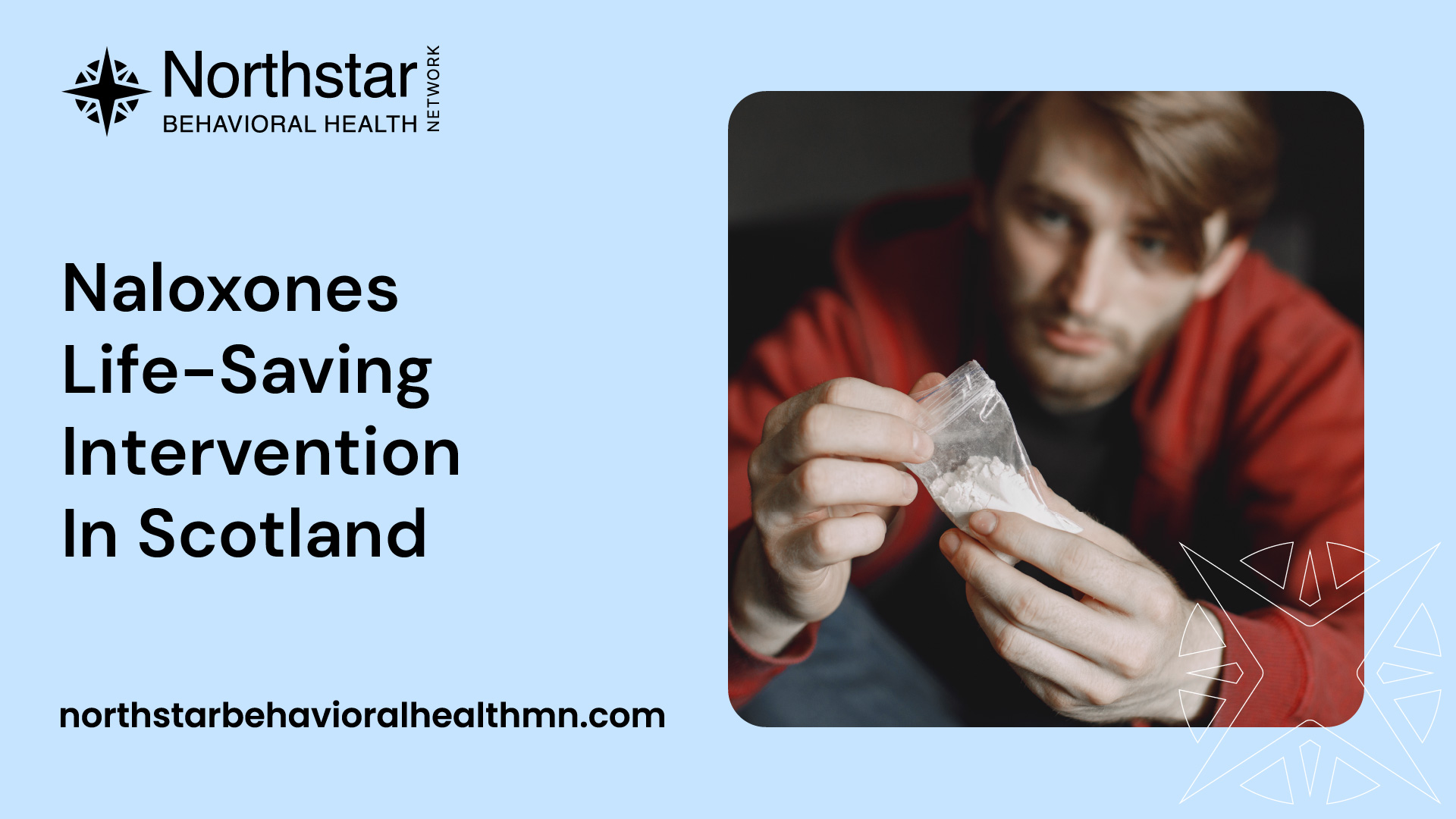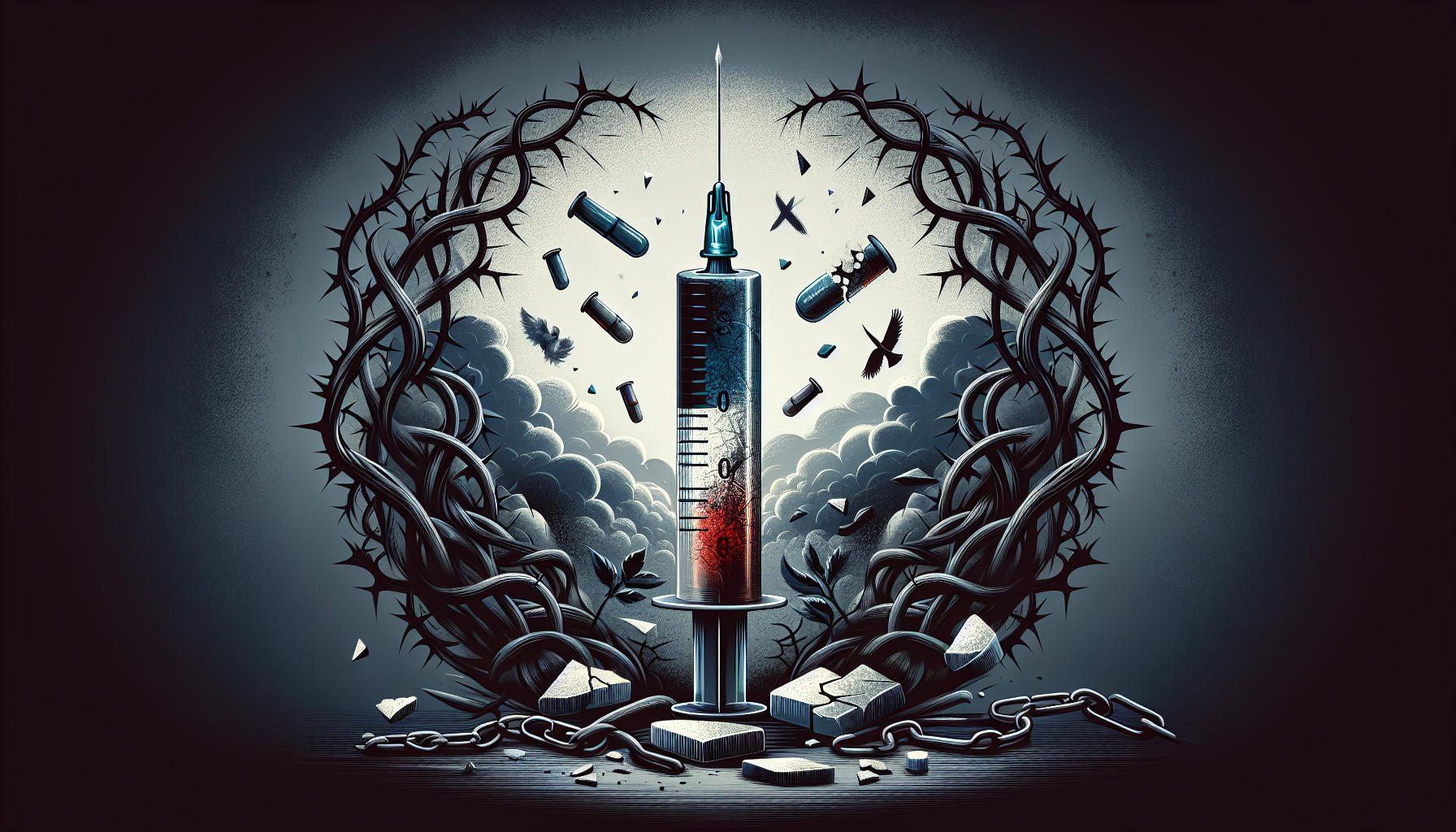September 2, 2024
Naloxones Life-Saving Intervention In Scotland
Discover how naloxone is saving lives in Scotland.


Understanding Naloxone
Naloxone is a medication that has been instrumental in saving lives during opioid overdose emergencies. It is an opioid antagonist, meaning it works by rapidly binding to the opioid receptors in the brain, blocking the effects of opioids. Naloxone is commonly administered through a nasal spray or injection.
The primary purpose of naloxone is to reverse the life-threatening effects of an opioid overdose, such as respiratory depression. By quickly restoring normal breathing, naloxone buys precious time for emergency medical personnel to arrive and provide further care.
How Naloxone Saves Lives
When a person overdoses on opioids, their breathing becomes dangerously slow or may even stop completely. This lack of oxygen can lead to irreversible brain damage or death if left untreated. Naloxone acts as a rapid intervention, binding to the opioid receptors and displacing the opioids, thereby restoring normal breathing.
It's crucial to remember that naloxone is an emergency intervention and not a substitute for comprehensive addiction treatment. While naloxone can reverse the immediate effects of an overdose, it does not address the underlying substance use disorder. Therefore, it is essential to seek further medical attention and support following naloxone administration.
In Scotland, the implementation of naloxone programs has played a significant role in reducing opioid overdose deaths and providing individuals with a second chance at life. The success stories from Scotland serve as a testament to the effectiveness of naloxone as a life-saving intervention. To learn more about the implementation of naloxone programs in Scotland, continue reading our article on Naloxone in Scotland.
By understanding naloxone and how it works to save lives, individuals and communities can take proactive steps to address the opioid crisis and ensure the availability of this life-saving medication.
Naloxone in Scotland
In Scotland, the implementation of naloxone programs has been instrumental in saving lives and addressing the opioid crisis. Naloxone, a medication that can reverse opioid overdoses, has proven to be a life-saving intervention in the country.
Implementation of Naloxone Programs
Scotland recognized the urgent need to combat opioid overdoses and took proactive measures to make naloxone widely available. Naloxone programs were implemented throughout the country, ensuring that this life-saving medication is accessible to those who need it most.
These programs involve training individuals, including healthcare professionals, community workers, and even family members of individuals at risk of opioid overdose, on how to administer naloxone effectively. The training emphasizes the importance of recognizing the signs of overdose and taking immediate action to administer naloxone.
Success Stories from Scotland
The implementation of naloxone programs in Scotland has yielded remarkable success stories. Lives have been saved, and individuals who have experienced opioid overdoses have been given a second chance at life. Naloxone has become an essential tool in preventing fatal outcomes and providing individuals with an opportunity to seek further support and treatment for their addiction.
The success of naloxone programs in Scotland can be attributed to the collaborative efforts of various stakeholders, including government agencies, healthcare providers, community organizations, and individuals affected by addiction. This multi-faceted approach has helped create a supportive environment where naloxone is recognized as a vital intervention in saving lives.
The impact of naloxone programs extends beyond the immediate reversal of overdoses. By providing individuals with the knowledge and tools to administer naloxone, these programs empower the community to take an active role in preventing opioid-related deaths. This increased awareness and preparedness contribute to the overall public health response to the opioid crisis in Scotland.
Naloxone programs in Scotland serve as a model for other regions grappling with similar challenges. The success stories from Scotland highlight the importance of accessible and widespread naloxone distribution, along with comprehensive training programs. By continuing to advocate for naloxone and exploring potential expansion of these programs, Scotland is paving the way for effective interventions in the face of the opioid crisis.
For more information on addiction recovery and related topics, visit our is thirty days really the magic number? article.
Accessibility and Training
Ensuring the availability of naloxone and providing proper training on its administration are crucial aspects of its successful implementation in Scotland.
Availability of Naloxone in Scotland
In Scotland, efforts have been made to increase the accessibility of naloxone, a life-saving medication for opioid overdoses. Naloxone is available through various channels, including community pharmacies, drug treatment services, and outreach programs. This widespread availability allows individuals at risk of opioid overdose, as well as their friends, family members, and other potential bystanders, to obtain naloxone kits.
To further enhance accessibility, naloxone can also be obtained through harm reduction services, such as needle and syringe programs, where individuals can access clean needles and other supplies. These harm reduction services play a vital role in reaching individuals who may be at a higher risk of opioid overdose.
Training on Naloxone Administration
Alongside the availability of naloxone, training on its administration is essential to empower individuals to respond effectively during an opioid overdose emergency. Training programs are offered to various groups, including people who use drugs, their families, friends, and the wider community.
These training sessions teach participants how to recognize the signs of an opioid overdose, administer naloxone safely, and perform basic life support techniques until emergency medical services arrive. The training aims to build confidence and equip individuals with the skills needed to respond promptly and effectively in an overdose situation.
By providing training opportunities, individuals become better prepared to administer naloxone and potentially save lives. This training acts as a vital tool in empowering communities and reducing the harm caused by opioid overdoses.
Naloxone accessibility and training initiatives in Scotland are crucial steps in combating the devastating impact of opioid overdoses. By making naloxone widely available and providing comprehensive training on its administration, Scotland is taking significant strides towards saving lives and promoting harm reduction. To learn more about the impact of naloxone and its role in addiction recovery, continue reading our article on naloxone as a tool for recovery.
Impact on Addiction Recovery
Naloxone, as a life-saving intervention, not only saves lives in the event of an opioid overdose but also plays a significant role in supporting addiction recovery. In this section, we will explore how naloxone serves as a tool for recovery and the importance of supportive services alongside its use.
Naloxone as a Tool for Recovery
Naloxone acts as a vital tool in addiction recovery by providing a safety net in case of an overdose. Its availability and administration by trained individuals allow for immediate intervention, potentially preventing fatal outcomes. By reversing the effects of opioid overdose and restoring normal breathing, naloxone gives individuals a second chance to seek help and engage in their recovery journey.
Moreover, the presence of naloxone can provide reassurance and empowerment to individuals in recovery. It reduces the fear associated with relapse and enables individuals to focus on their treatment and long-term goals without the constant worry of accidental overdose. Knowing that naloxone is readily accessible can increase confidence and motivation during the recovery process.
Supportive Services Alongside Naloxone
While naloxone is an essential tool, it is crucial to recognize that it is just one component of a comprehensive approach to addiction recovery. Supportive services, such as counseling, therapy, and peer support, play a pivotal role in addressing the underlying causes of addiction and promoting long-term recovery.
Counseling and therapy provide individuals with the opportunity to explore the root causes of their addiction, develop coping strategies, and work towards building a healthier and more fulfilling life. These services help individuals address the emotional, psychological, and behavioral aspects of addiction, fostering personal growth and resilience.
Peer support, such as support groups or 12-step programs, offers individuals the chance to connect with others who have experienced similar struggles. Sharing experiences, offering guidance, and receiving encouragement from peers can be invaluable in maintaining sobriety and navigating the challenges of recovery.
By combining the use of naloxone with supportive services, individuals in recovery can benefit from a comprehensive approach that addresses both immediate safety concerns and long-term healing. The availability of naloxone, alongside counseling, therapy, and peer support, creates a supportive environment that promotes recovery, reduces stigma, and saves lives.
As we continue to advocate for naloxone and its integration into addiction recovery programs, it is essential to recognize the ongoing need for supportive services. Together, these elements contribute to a comprehensive and compassionate approach to addiction recovery, helping individuals rebuild their lives and achieve lasting sobriety.
Overcoming Stigma and Barriers
Addressing the stigma and barriers associated with naloxone is essential for its effective implementation and widespread access. By dispelling misconceptions and breaking down barriers, more lives can be saved through the use of this life-saving intervention.
Addressing Misconceptions about Naloxone
One of the major challenges in promoting naloxone is the presence of misconceptions that surround its use. It is important to address these misconceptions and provide accurate information to the public. Some common misconceptions include:
- Enabling drug use: Naloxone is often misunderstood as enabling drug use. However, naloxone is intended to reverse the effects of an opioid overdose and provide a second chance for individuals to seek appropriate medical care. It does not encourage or enable continued drug use.
- Complexity and safety concerns: Some individuals may perceive naloxone as a complex medication that can only be administered by medical professionals. In reality, naloxone is available in user-friendly forms, such as nasal sprays and auto-injectors, which can be easily administered by anyone with minimal training. It is a safe medication with few side effects when used as directed.
- Moral judgment and stigma: Stigma associated with addiction can sometimes extend to naloxone. It is important to emphasize that naloxone is not a reflection of moral character or weakness. It is a life-saving intervention that can provide individuals with the opportunity to seek help and recover from addiction.
By addressing these misconceptions through educational campaigns, community outreach, and public awareness programs, we can combat the stigma and ensure that naloxone is seen as an essential tool in saving lives.
Breaking Down Barriers to Naloxone Access
In addition to addressing misconceptions, it is crucial to break down barriers that hinder access to naloxone. Some key barriers include:
- Lack of awareness: Many individuals, including those who are at high risk of opioid overdose, may be unaware of naloxone and its availability. Education and outreach programs should be implemented to increase awareness among individuals who may benefit from naloxone.
- Limited availability: Ensuring the widespread availability of naloxone is essential for its effective use. This includes making naloxone accessible in various settings such as pharmacies, community centers, and harm reduction programs. Efforts should also be made to ensure that naloxone is affordable and covered by insurance plans.
- Training and education: Proper training on naloxone administration is critical to its effective use. Training programs should be made widely available to individuals who may be in a position to administer naloxone, including first responders, family members, and friends of individuals at risk of overdose.
By addressing these barriers through policy changes, increased funding for naloxone programs, and community support, we can ensure that naloxone is readily accessible to those who need it most.
Overcoming stigma and breaking down barriers are essential steps in maximizing the impact of naloxone in saving lives. By promoting accurate information, increasing awareness, and ensuring widespread access, we can harness the full potential of naloxone as a life-saving intervention.
The Future of Naloxone
As the life-saving intervention, naloxone continues to play a vital role in addressing opioid overdoses and saving lives. In Scotland, the future of naloxone looks promising, with continued advocacy and potential expansion of naloxone programs.
Continued Advocacy for Naloxone
Advocacy for naloxone remains a priority in Scotland's efforts to combat opioid overdoses. Key stakeholders, including healthcare professionals, addiction specialists, and community organizations, continue to advocate for the widespread availability and accessibility of naloxone. The focus is on raising awareness about naloxone's effectiveness in reversing opioid overdoses and the importance of its distribution to those at risk.
To support continued advocacy, research studies are being conducted to gather evidence of naloxone's impact on reducing opioid-related deaths. These studies provide valuable data to advocate for policy changes and funding allocation to expand naloxone programs.
Potential Expansion of Naloxone Programs
The success of naloxone programs in Scotland has paved the way for potential expansion to reach even more individuals who may experience or witness an opioid overdose. The aim is to ensure that naloxone is readily available in a variety of settings, including healthcare facilities, harm reduction centers, community pharmacies, and outreach programs.
Expanding naloxone programs involves training a wider range of individuals in recognizing and responding to opioid overdoses. This includes healthcare professionals, first responders, community volunteers, and individuals with a history of substance use. By equipping a larger network of individuals with naloxone, more lives can be saved.
To support the potential expansion of naloxone programs, funding and resources need to be allocated to train individuals in naloxone administration and to procure an adequate supply of naloxone kits. This will ensure that naloxone is accessible to those who need it most.
By continuing to advocate for naloxone and exploring possibilities for expansion, Scotland is taking important steps towards addressing opioid overdoses and saving lives. The future of naloxone holds the promise of further reducing opioid-related deaths and providing critical support to individuals affected by opioid addiction.
For more information on related topics, please refer to our articles on is thirty days really the magic number? and new study shows alarming information about daily adolescent substance use.

.jpg)




.jpg)

